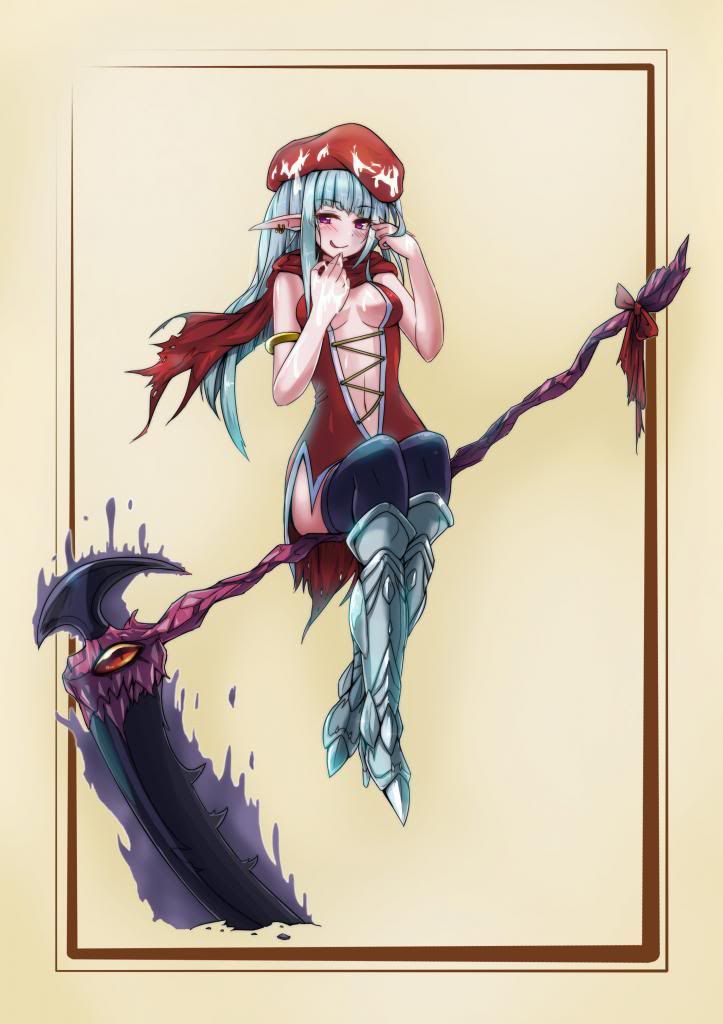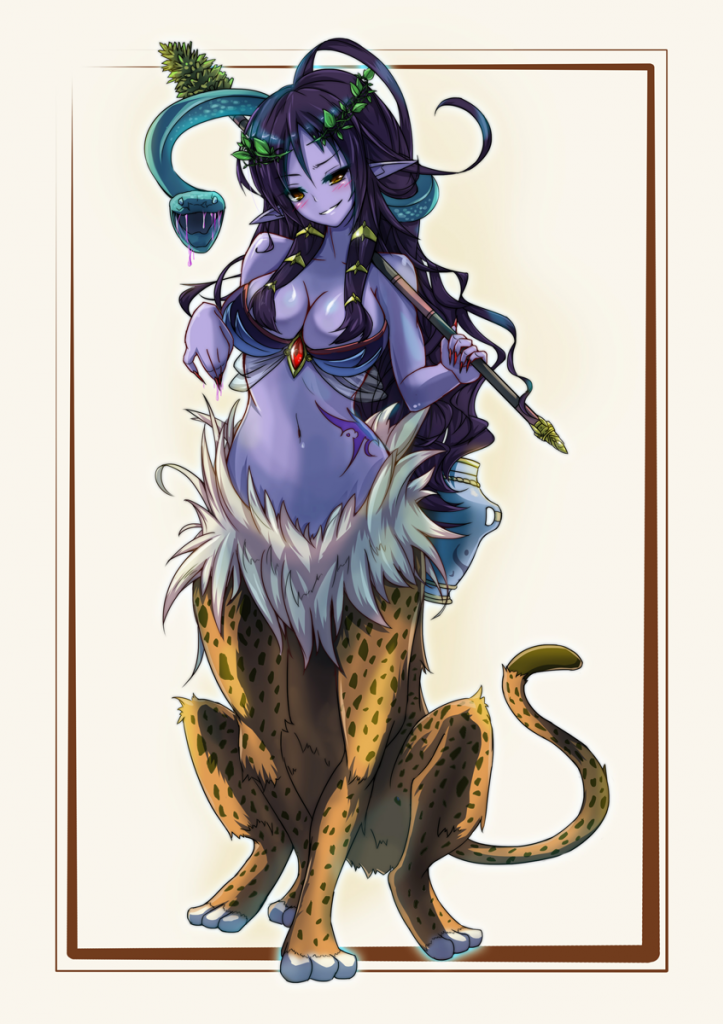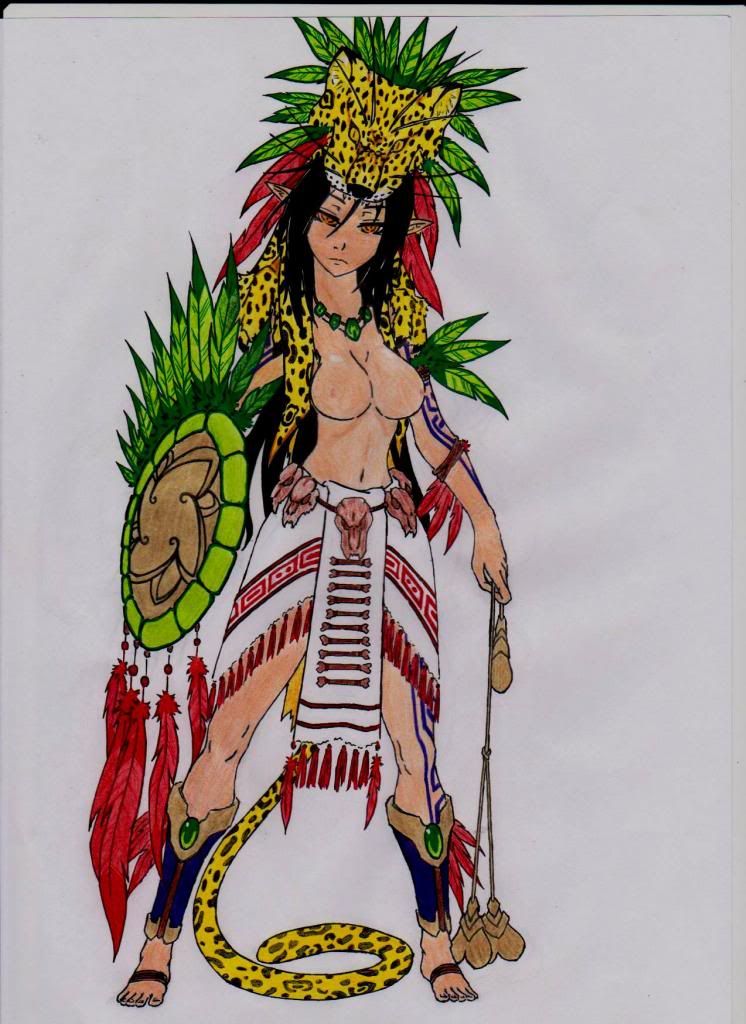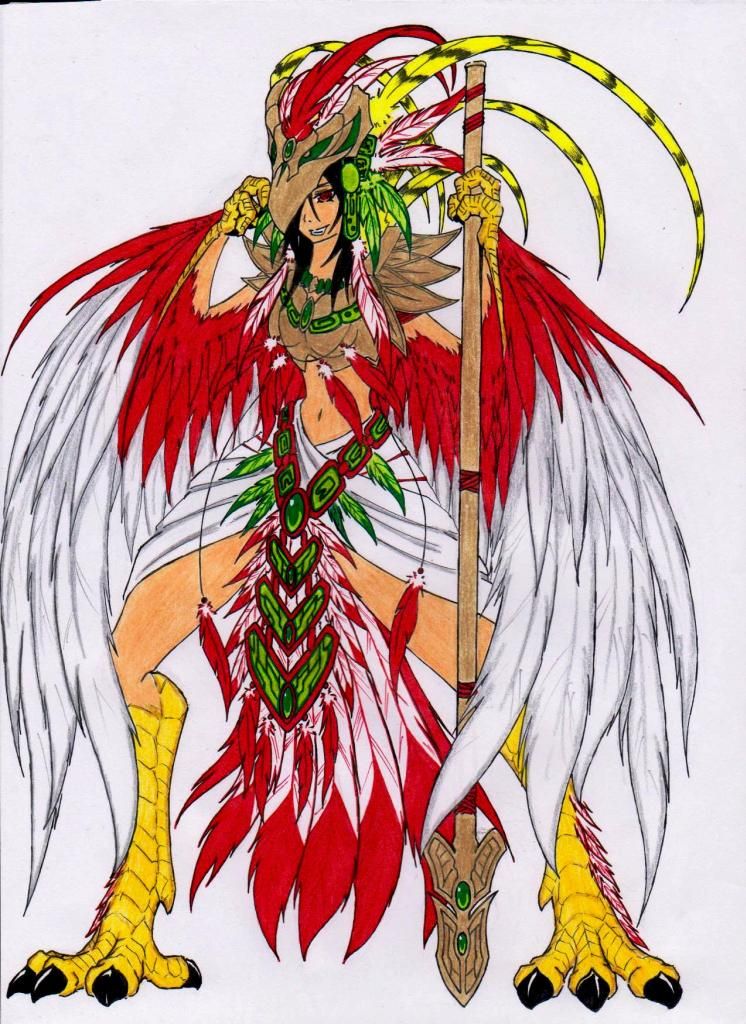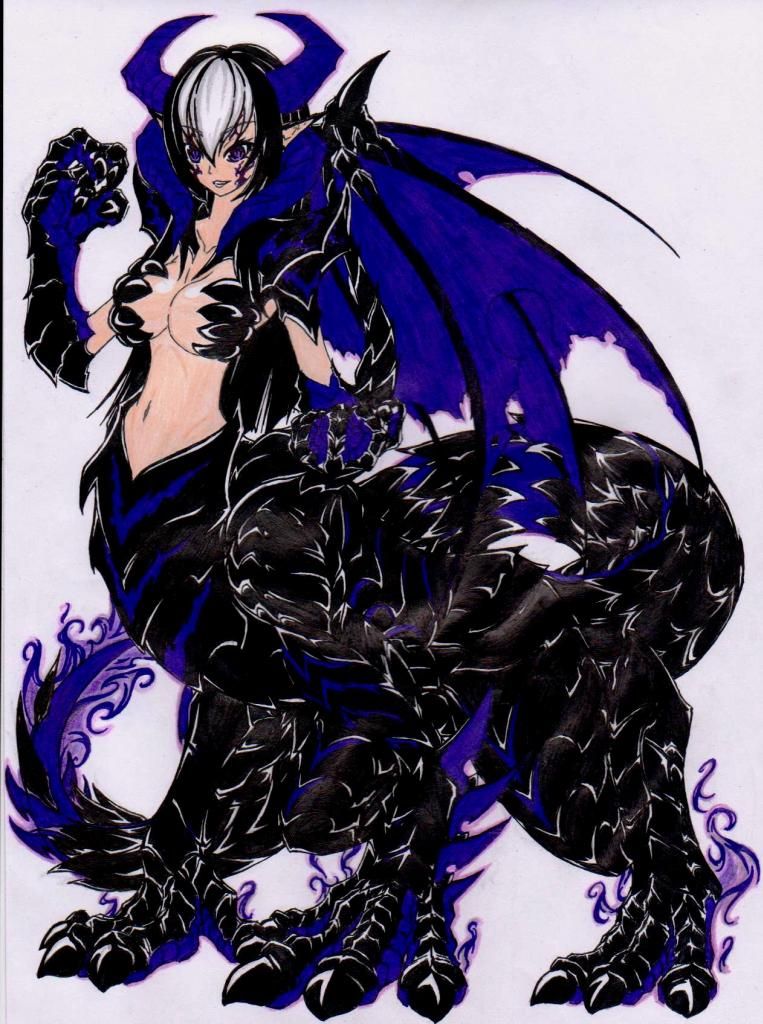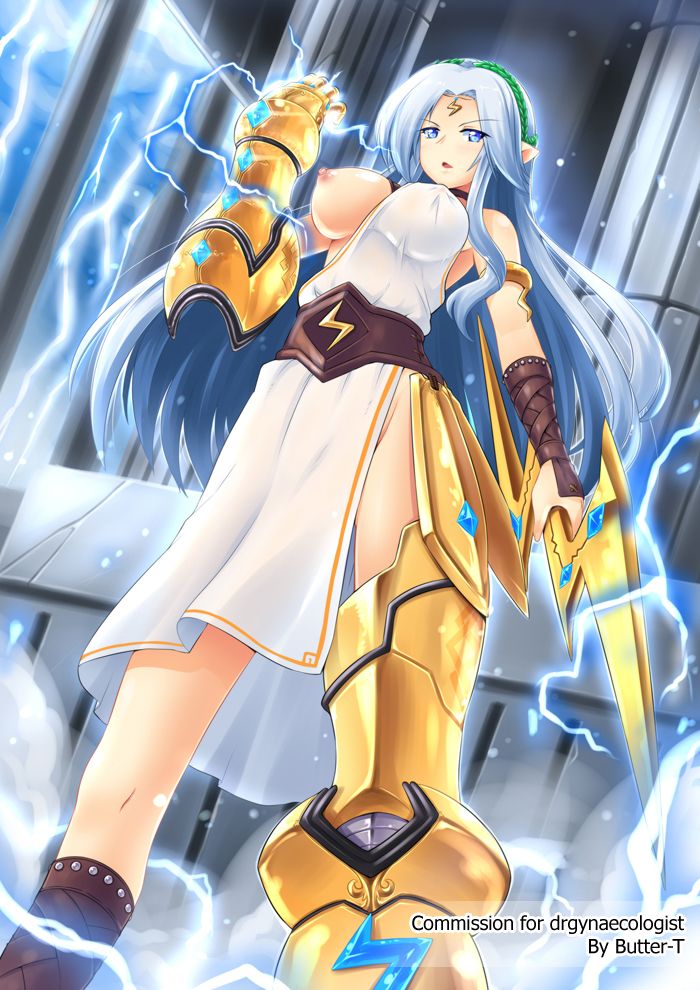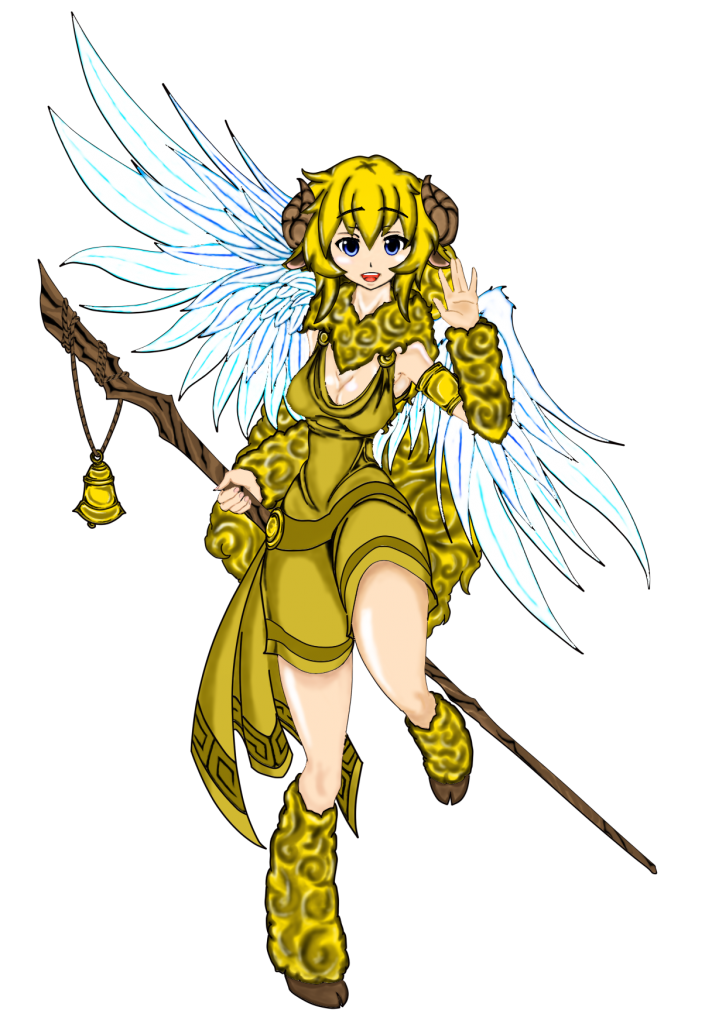Titanomachy
Posted: Sat Sep 14, 2013 2:05 pm
Hi folks, just to get some more exposure, I'd like to place Titanomachy here. A setting I've been slowly working on, hope you enjoy.
Titanomachy
The World of Oikoumene
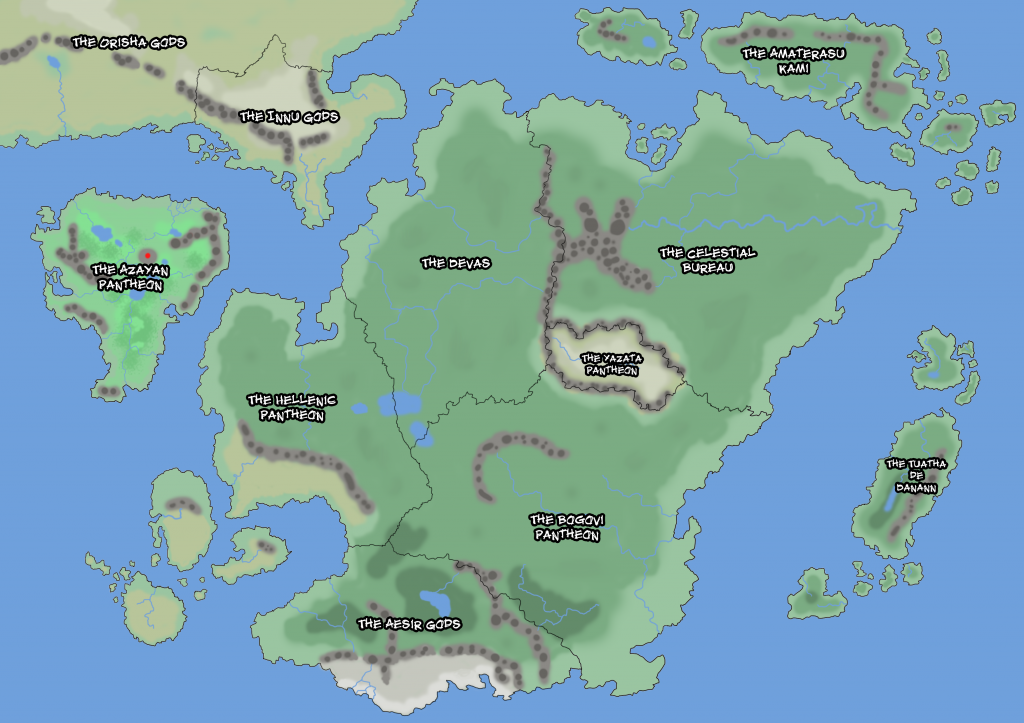
As you probably know, almost a hundred years ago the titans escaped from Tartarus, the prison they had been incarcerated in since the first Titanomachy. Since then, they have begun a war against humanity with the objective of wiping out the gods’ source of Ambrosia, namely the faith of us humans. Denied faith as waters for the growth of Ambrosia, the gods will wither and pass away as any mortal being would. To this end, the titans have created armies, hordes and individual monsters that desire nothing more than to kill, destroy and devour us humans. However, to counter this, the gods have created hekatonkheires, creatures that combine the features of monsters and human women.
Unlike the monsters of the titans, the hekatonkheires feel affection for, and even a desire to protect, humanity. Also, thanks to the foresight of Odin, they were created with the ability, and desire, to breed with humans, thus bolstering their numbers and providing hope to humanity which bolsters the faith the gods recieve. While the hekatonkheires aren’t all as devoted to humanity as others among their races, none have sided with the titans due to the natural instincts given to them by the wise gods.
Within this book, I will identify both the titan’s monsters and the hekatonkheires that serve the gods. I will describe their appearance, their behaviours and where they can typically be found. I will also add personal observations and mention any alliances or predilections they may have. I will also describe the gods, their pantheons and how they are acting against the plots of the titans. I will also describe the titans themselves and do the best I can to give outlines of their recent actions and their future plans.
===
Ambrosia
Ambrosia, the food of the gods, without it, they would be as mortal as you and I, yet with it, they are the gods you and I worship. Grown in the heavens, and watered with the faith of humanity, Ambrosia is the divine food, and even a mortal eating some will find the ravages of age falling away from them, given a new lease of years if they have the favour of the gods. In the same way, Ambrosia provides the gods with energy and life, letting them expend their divine energies without lessening themselves, while also giving them their ageless forms.
How is Ambrosia Created?
Ambrosia is created as a natural by-product of the faith humanity has in the gods. The god realms of each pantheon naturally transform the faith of humanity into Ambrosia, typically in the shape of a fruit with an unusual appearance. The faith coming up from the material plane is distilled by certain plants in the heavens, refined and then growing as fruit on these divine plants.
===
The Pantheons
Each of the pantheons is a collection of gods that cooperate to rule over a racial group of human’s they have chosen as their people. For example, the pantheon of gods that Zeus rules over is the Hellenes, and Zeus’ pantheon is called the Hellenic pantheon, or more commonly, the Hellenic gods. Each pantheon is ruled over by a single deity, with some excpetions, and the rest of the pantheon's gods fulfill specific roles such as controlling the cycle of seasons in their domains, or inspiring mortals to love one another.
At this time, there are at least eleven known pantheons, with more possibly existing beyond the seas or on other planes. Each pantheon contains dozens of deities, for example, at this very moment I can recall the names of more than forty members of the Hellenic pantheon. As such, while I will do my best to mention each major deity, a full listing of the divine members of each pantheon would be a book unto its own.
The Hellenic Pantheon
The first group I must mention are the gods of the Hellenes. A powerful and large collection of gods ruled over by Zeus, while supported by her siblings Poseidon and Hades. Each of the three siblings ruling over the one aspect of the Oikoumene. The skies and heavens for Zeus, the oceans, seas and rivers for Poseidon and finally, the land and underworld for Hades. Other major deities in the Hellenic pantheon include Dionysus, Demeter, Artemis, Apollo, Athena, Hera, Hermes, Hephaestus, Aphrodite and Ares. While respected among the other pantheons for their intelligence, many of the other pantheons see the Hellenic gods as flighty, irreverent and too interested in their next sexual conquest to be taken seriously. If it weren’t for the charisma of Zeus and her close relationship with Odin, and thus the Aesir, it’s unlikely the Hellenic pantheon would lead the other pantheons as it currently does.
The Aesir
A combined group of two former rival groups of gods, Vanir now work with the Aesir, oaths of loyalty and care for the Norse peoples now binding the two former pantheons together. The leader of the Aesir is Odin, a beautiful and forceful goddess who traded an eye for a drink from the Well of Mimir. What she gained from this trade is unknown, however, it is rumoured Odin is obsessed with thwarting Ragnarok. Asides from Odin, the other major gods of the Aesir are Loki, Freya, Freyr, Hel, Frigg, Baldur, Heimdall, Tyr, Thor and Sif. The other pantheons see the Aesir as a proud, belligerent and warlike pantheon. However, in these troubled times they’re seen as valuable allies, their belligerence valuable and appreciated. It must also be noted that the Aesir and Hellenic pantheon are fast allies thanks to the romantic infatuation Odin has for Zeus.
The Amaterasu Kami
Led by Amaterasu, this is the pantheon of the Nippon Isles. Every member of this pantheon is a former spirit of nature that, through the nourishment of human faith, managed to become divine beings in their own right. Other than Amaterasu, other Kami of note are Hachiman, Izanagi, Izanami, Raiden, Susano-o, Tsukiyomi, Uzume, Fujin, Inari, Omoikane, Suijin and Tenjin. Unlike the other pantheons, while they still care for the humans within their domain, being elevated spirits of nature in general, the Amaterasu Kami are more concerned for their lands and maintaining harmony in the natural world. While the other pantheons enjoy their support, they find it hard to truly trust what they perceive to be a bunch of upstart nature spirits. Meanwhile, the Amaterasu Kami find it hard to be truly interested in the Titan’s attacks against humanity since thus far the war has had little impact of the lands of the Nippon Isles.
The Azayan
The Azayan pantheon, led by Huitzilopochtli is the combination of two former pantheons. The Aztlanti and the Maya, two closely allied pantheons that went to war with the other pantheons more than a hundred years ago over the use of human sacrifice in rituals, they suffered heavy losses against the other pantheons united and are now a shadow of their former power. Other than their war chief Huitzilopochtli, the other gods of note within the Azayan pantheon are Xipe Totec, Xbalanque, Quetzalcoatl, Tezcatlipoca, Hun Batz, Xochiquetzal, Tlaloc, Chalchiuhtlicue, Tlazolteotl, Mictlantecuhtli. This combined pantheon still smarts over the insult and losses they suffered at the hands of Zeus and her allies. While they’ve given oaths to not allow their follows to perform human sacrifice, nor to raise arms against the other pantheons, the Azayan gods still their followers to ritually let blood or to dedicate menstrual cycles to them. The other pantheons think of the Azayan gods as barbaric, staid and aggressive, but at this point, that’s something that can be put to use against the titans.
The Celestial Bureau
The pantheon known as the Celestial Bureau is led by the god known as the Jade Emperor, a title that changes hands among the Celestial Bureau as need demands. From an outsider’s perspective, the Celestial Bureau can look chaotic and inefficient, but this is actually part of their divine mandate and function, creating efficiency from chaos. Strongly opposed to the titans for the disorder they represent, the Celestial Bureau include the following gods, the title of Jade Emperor currently held by one of their number, Chang’e, Fu Hsi, Guan Yu, Guanyin, Houyi, Huang Di, Ne Zha, Nu Kua, Shennong, Sun Wukong, Hsi Wang Mu and Yen Lo Wang. The other pantheons see the Celestial Bureau as pessimistic and sometimes unfair to their chosen peoples, but these gods believe that sometimes an individual must suffer for the greater good of the all.
The Innu
The Innu is one of the largest pantheons, second in power only to the Hellenic pantheon. Led by Ra, a powerful god of the Sun and Justice, the pantheon is violently opposed to the Titan’s attack on humanity. Many of the Innu having mortal familial lines they care for deeply, even their aristocracy, the Pharaohs, being descended from Ra himself. Gods of note other than Ra include Ptah, Sekhmet, Bastet, Hathor, Thoth, Isis, Osiris, Set, Neith, Horus, Anubis and Sobek. While the other pantheons think that the Innu are a little too traditionalist and staid, they recognise that their love for humanity and their domain is powerful and love can be a great ally during the horrors of war. However, the Innu do have one quirk, they refuse to work with, or even talk to, members of the Azayan pantheon, seeing them as barbaric savages as hungry for blood as any Titan.
The Tuatha de Danann
The Tuatha de Danann is a small, but boisterous and energetic, pantheon led by the god Nuada. Nuada is a goddess known for her fair and even-handed leadership, as just at court as she is honourable in battle. Thus far, the depredations of the Second Titanomachy have not affected their lands, the Isle of Albion, yet still they rally to the banners of Zeus. Manannan mac Lir, Ogma, Lugh, The Dagda,, Aengus, Brigid and the Morrigan make up the rest of the pantheon of note. Their battles against the Fir Bolg, and their leader Balor, are still within the living memories of humans, and as such they are seen as masterful warriors by the majority of the other pantheons. However, what the other pantheons don’t know, nor suspect, is that Nuada is still of cordial terms with Danu, the Titanic parent of the Tuatha.
The Yazata
A truly ancient pantheon, whose power was once far greater than that of the current Hellenes, they are now led by Mithra. Valuing order and stability to an extent that even surpasses that of the Celestial Bureau or the Bogovi, the Yazata are not only violently opposed to the Titans, but also place unusual taboos and ritual demands on their peoples. Alongside Mithra, the Yazata includes Anahita, Haoma, Ard, Mah, Vahram, Atar, Sraosha, Vanu, Tishtrya and Zam. Now much smaller in power, and less in number, than their past glory days, the Yazata don’t resent the newer pantheons, despite occasional grumbles about upstarts and whippersnappers. The other pantheons also appreciate their fervour for battle with the titans, their strategic clarity and the wise council they give that their breadth of experience has given them.
Titanomachy
The World of Oikoumene

As you probably know, almost a hundred years ago the titans escaped from Tartarus, the prison they had been incarcerated in since the first Titanomachy. Since then, they have begun a war against humanity with the objective of wiping out the gods’ source of Ambrosia, namely the faith of us humans. Denied faith as waters for the growth of Ambrosia, the gods will wither and pass away as any mortal being would. To this end, the titans have created armies, hordes and individual monsters that desire nothing more than to kill, destroy and devour us humans. However, to counter this, the gods have created hekatonkheires, creatures that combine the features of monsters and human women.
Unlike the monsters of the titans, the hekatonkheires feel affection for, and even a desire to protect, humanity. Also, thanks to the foresight of Odin, they were created with the ability, and desire, to breed with humans, thus bolstering their numbers and providing hope to humanity which bolsters the faith the gods recieve. While the hekatonkheires aren’t all as devoted to humanity as others among their races, none have sided with the titans due to the natural instincts given to them by the wise gods.
Within this book, I will identify both the titan’s monsters and the hekatonkheires that serve the gods. I will describe their appearance, their behaviours and where they can typically be found. I will also add personal observations and mention any alliances or predilections they may have. I will also describe the gods, their pantheons and how they are acting against the plots of the titans. I will also describe the titans themselves and do the best I can to give outlines of their recent actions and their future plans.
===
Ambrosia
Ambrosia, the food of the gods, without it, they would be as mortal as you and I, yet with it, they are the gods you and I worship. Grown in the heavens, and watered with the faith of humanity, Ambrosia is the divine food, and even a mortal eating some will find the ravages of age falling away from them, given a new lease of years if they have the favour of the gods. In the same way, Ambrosia provides the gods with energy and life, letting them expend their divine energies without lessening themselves, while also giving them their ageless forms.
How is Ambrosia Created?
Ambrosia is created as a natural by-product of the faith humanity has in the gods. The god realms of each pantheon naturally transform the faith of humanity into Ambrosia, typically in the shape of a fruit with an unusual appearance. The faith coming up from the material plane is distilled by certain plants in the heavens, refined and then growing as fruit on these divine plants.
===
The Pantheons
Each of the pantheons is a collection of gods that cooperate to rule over a racial group of human’s they have chosen as their people. For example, the pantheon of gods that Zeus rules over is the Hellenes, and Zeus’ pantheon is called the Hellenic pantheon, or more commonly, the Hellenic gods. Each pantheon is ruled over by a single deity, with some excpetions, and the rest of the pantheon's gods fulfill specific roles such as controlling the cycle of seasons in their domains, or inspiring mortals to love one another.
At this time, there are at least eleven known pantheons, with more possibly existing beyond the seas or on other planes. Each pantheon contains dozens of deities, for example, at this very moment I can recall the names of more than forty members of the Hellenic pantheon. As such, while I will do my best to mention each major deity, a full listing of the divine members of each pantheon would be a book unto its own.
The Hellenic Pantheon
The first group I must mention are the gods of the Hellenes. A powerful and large collection of gods ruled over by Zeus, while supported by her siblings Poseidon and Hades. Each of the three siblings ruling over the one aspect of the Oikoumene. The skies and heavens for Zeus, the oceans, seas and rivers for Poseidon and finally, the land and underworld for Hades. Other major deities in the Hellenic pantheon include Dionysus, Demeter, Artemis, Apollo, Athena, Hera, Hermes, Hephaestus, Aphrodite and Ares. While respected among the other pantheons for their intelligence, many of the other pantheons see the Hellenic gods as flighty, irreverent and too interested in their next sexual conquest to be taken seriously. If it weren’t for the charisma of Zeus and her close relationship with Odin, and thus the Aesir, it’s unlikely the Hellenic pantheon would lead the other pantheons as it currently does.
The Aesir
A combined group of two former rival groups of gods, Vanir now work with the Aesir, oaths of loyalty and care for the Norse peoples now binding the two former pantheons together. The leader of the Aesir is Odin, a beautiful and forceful goddess who traded an eye for a drink from the Well of Mimir. What she gained from this trade is unknown, however, it is rumoured Odin is obsessed with thwarting Ragnarok. Asides from Odin, the other major gods of the Aesir are Loki, Freya, Freyr, Hel, Frigg, Baldur, Heimdall, Tyr, Thor and Sif. The other pantheons see the Aesir as a proud, belligerent and warlike pantheon. However, in these troubled times they’re seen as valuable allies, their belligerence valuable and appreciated. It must also be noted that the Aesir and Hellenic pantheon are fast allies thanks to the romantic infatuation Odin has for Zeus.
The Amaterasu Kami
Led by Amaterasu, this is the pantheon of the Nippon Isles. Every member of this pantheon is a former spirit of nature that, through the nourishment of human faith, managed to become divine beings in their own right. Other than Amaterasu, other Kami of note are Hachiman, Izanagi, Izanami, Raiden, Susano-o, Tsukiyomi, Uzume, Fujin, Inari, Omoikane, Suijin and Tenjin. Unlike the other pantheons, while they still care for the humans within their domain, being elevated spirits of nature in general, the Amaterasu Kami are more concerned for their lands and maintaining harmony in the natural world. While the other pantheons enjoy their support, they find it hard to truly trust what they perceive to be a bunch of upstart nature spirits. Meanwhile, the Amaterasu Kami find it hard to be truly interested in the Titan’s attacks against humanity since thus far the war has had little impact of the lands of the Nippon Isles.
The Azayan
The Azayan pantheon, led by Huitzilopochtli is the combination of two former pantheons. The Aztlanti and the Maya, two closely allied pantheons that went to war with the other pantheons more than a hundred years ago over the use of human sacrifice in rituals, they suffered heavy losses against the other pantheons united and are now a shadow of their former power. Other than their war chief Huitzilopochtli, the other gods of note within the Azayan pantheon are Xipe Totec, Xbalanque, Quetzalcoatl, Tezcatlipoca, Hun Batz, Xochiquetzal, Tlaloc, Chalchiuhtlicue, Tlazolteotl, Mictlantecuhtli. This combined pantheon still smarts over the insult and losses they suffered at the hands of Zeus and her allies. While they’ve given oaths to not allow their follows to perform human sacrifice, nor to raise arms against the other pantheons, the Azayan gods still their followers to ritually let blood or to dedicate menstrual cycles to them. The other pantheons think of the Azayan gods as barbaric, staid and aggressive, but at this point, that’s something that can be put to use against the titans.
The Celestial Bureau
The pantheon known as the Celestial Bureau is led by the god known as the Jade Emperor, a title that changes hands among the Celestial Bureau as need demands. From an outsider’s perspective, the Celestial Bureau can look chaotic and inefficient, but this is actually part of their divine mandate and function, creating efficiency from chaos. Strongly opposed to the titans for the disorder they represent, the Celestial Bureau include the following gods, the title of Jade Emperor currently held by one of their number, Chang’e, Fu Hsi, Guan Yu, Guanyin, Houyi, Huang Di, Ne Zha, Nu Kua, Shennong, Sun Wukong, Hsi Wang Mu and Yen Lo Wang. The other pantheons see the Celestial Bureau as pessimistic and sometimes unfair to their chosen peoples, but these gods believe that sometimes an individual must suffer for the greater good of the all.
The Innu
The Innu is one of the largest pantheons, second in power only to the Hellenic pantheon. Led by Ra, a powerful god of the Sun and Justice, the pantheon is violently opposed to the Titan’s attack on humanity. Many of the Innu having mortal familial lines they care for deeply, even their aristocracy, the Pharaohs, being descended from Ra himself. Gods of note other than Ra include Ptah, Sekhmet, Bastet, Hathor, Thoth, Isis, Osiris, Set, Neith, Horus, Anubis and Sobek. While the other pantheons think that the Innu are a little too traditionalist and staid, they recognise that their love for humanity and their domain is powerful and love can be a great ally during the horrors of war. However, the Innu do have one quirk, they refuse to work with, or even talk to, members of the Azayan pantheon, seeing them as barbaric savages as hungry for blood as any Titan.
The Tuatha de Danann
The Tuatha de Danann is a small, but boisterous and energetic, pantheon led by the god Nuada. Nuada is a goddess known for her fair and even-handed leadership, as just at court as she is honourable in battle. Thus far, the depredations of the Second Titanomachy have not affected their lands, the Isle of Albion, yet still they rally to the banners of Zeus. Manannan mac Lir, Ogma, Lugh, The Dagda,, Aengus, Brigid and the Morrigan make up the rest of the pantheon of note. Their battles against the Fir Bolg, and their leader Balor, are still within the living memories of humans, and as such they are seen as masterful warriors by the majority of the other pantheons. However, what the other pantheons don’t know, nor suspect, is that Nuada is still of cordial terms with Danu, the Titanic parent of the Tuatha.
The Yazata
A truly ancient pantheon, whose power was once far greater than that of the current Hellenes, they are now led by Mithra. Valuing order and stability to an extent that even surpasses that of the Celestial Bureau or the Bogovi, the Yazata are not only violently opposed to the Titans, but also place unusual taboos and ritual demands on their peoples. Alongside Mithra, the Yazata includes Anahita, Haoma, Ard, Mah, Vahram, Atar, Sraosha, Vanu, Tishtrya and Zam. Now much smaller in power, and less in number, than their past glory days, the Yazata don’t resent the newer pantheons, despite occasional grumbles about upstarts and whippersnappers. The other pantheons also appreciate their fervour for battle with the titans, their strategic clarity and the wise council they give that their breadth of experience has given them.
